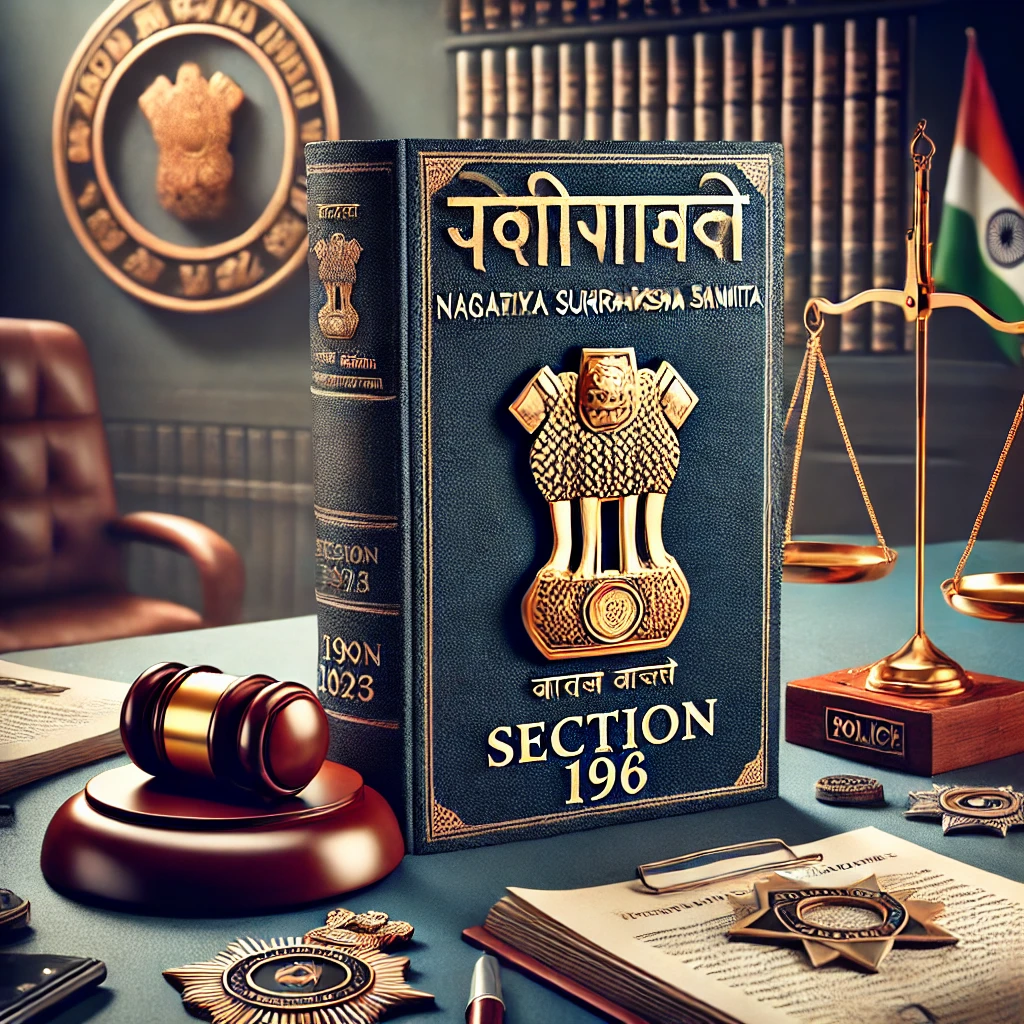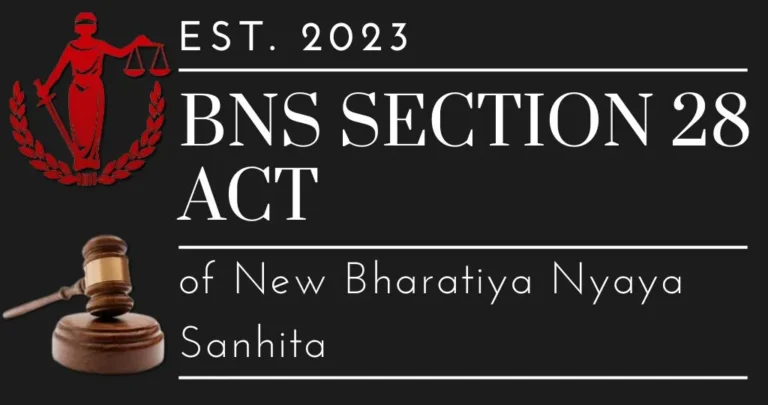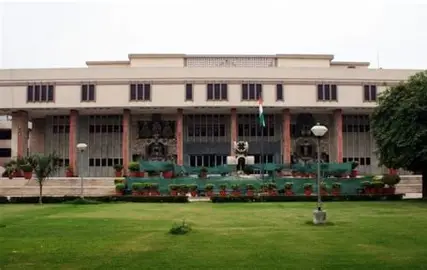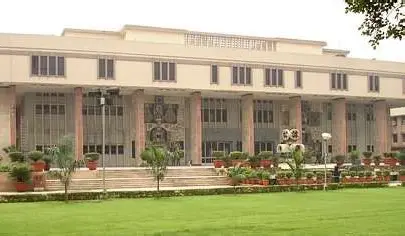
Bharatiya Nagarik Suraksha Sanhita, 2023: Detailed Explanation of Section 196 and Related Provisions
Bharatiya Nagarik Suraksha Sanhita, 2023: Section 196 and Connected Provisions in Detail
The Bharatiya Nagarik Suraksha Sanhita, 2023 replaced the Criminal Procedure Code and was enacted on 1st July 2024. The law aims to modernize and simplify the criminal investigation and procedure process in India. Section 196 of this Sanhita addresses the authority of Magistrates to investigate the cause of death, especially in suspicious cases. To gain a complete understanding of this section, it is necessary to begin by examining its relationship with Section 194, which prescribes the general rule for investigating suspicious deaths.
Section 194: Overview
For More Updates & Regular Notes Join Our Whats App Group (https://chat.whatsapp.com/DkucckgAEJbCtXwXr2yIt0) and Telegram Group ( https://t.me/legalmaestroeducators ) contact@legalmaestros.com.
It is necessary to have a brief overview of Section 194 before proceeding to Section 196. Section 194 is the legal provision for investigating deaths that can include criminal acts. It requires that in the event of a death under suspicious conditions, i.e., suicide, accidental death, or any death with a reasonable suspicion of an offense, a police officer is required to report to the nearest Executive Magistrate. The police officer has to investigate the cause of death thoroughly and make a report.
In those situations where a woman dies during or within seven years of marriage under suspicious conditions or in any other case where doubts arise, the body should be referred for medical examination. This ensures transparency and accuracy of the cause of death.
For the complete and elaborate explanation of Section 194, see the previous article published in Live Law Hindi.
Section 196 (1): Magistrate’s power of conducting inquiries
Under Section 196, if a case is under certain suspicious circumstances enumerated in Section 194(3)(i) or (ii) — like the suicide or unnatural death of a woman within seven years of marriage — the nearest Magistrate having authority to hold inquests is required to make an inquiry into the cause of death. In other cases falling under Section 194(1), the Magistrate may exercise discretion either to hold an inquiry itself or along with the police investigation.
For More Updates & Regular Notes Join Our Whats App Group (https://chat.whatsapp.com/DkucckgAEJbCtXwXr2yIt0) and Telegram Group ( https://t.me/legalmaestroeducators )
This implies that in extremely sensitive or suspicious instances, for example where a woman has died soon after marriage, the law provides for the safeguard that a Magistrate must personally investigate the cause of death. The Magistrate’s inquiry carries equal legal weight as an inquiry into any crime.
Example: A girl of twenty-five dies suspiciously six years into her marriage. As the case comes under Section 194(3)(i), the Magistrate will have to make an inquiry into her cause of death, as well as the police inquiry. The findings of the Magistrate will be highly persuasive in deciding on the legal line of action.
Section 196 (2): Inquiry in Police Custody or Other Authorized Custody
This sub-section provides for the cases where:
An individual dies or goes missing while under police detention or any other detention sanctioned by a Court or Magistrate.
A woman reports rape while in custody.
In such situations, the law requires that the Magistrate in whose jurisdiction the offense has been committed should hold an inquiry in addition to the investigation carried out by the police. This second inquiry by the Magistrate is an added protection against any potential abuse of power by the law enforcement authorities. It ensures that deaths or complaints of rape in custody are investigated thoroughly and impartially.
Example: A police custody man suddenly dies, and his family suspects foul play. Under Section 196(2), the Magistrate in the jurisdiction is required to hold an inquiry to verify that the reason for death is investigated in depth, in addition to the investigation by the police. This would avoid any cover-up or negligence.
Section 196 (3): Recording Evidence by Magistrate
When the Magistrate conducts such an inquiry, they must record the evidence they gather in a manner specified by law, depending on the case’s circumstances. This recorded evidence becomes part of the official legal documentation, ensuring transparency and accountability in the inquiry process.
Example: In the course of investigation into the death of an individual in police custody, the Magistrate takes statements from witnesses like the police personnel on duty and other prisoners. These statements turn out to be important evidence while establishing if there was any misbehavior resulting in death.
Section 196 (4): Exhuming Bodies for Examination
If the Magistrate feels that the dead body of a deceased person who has already been buried must be investigated to determine the cause of death, they can direct the body to be exhumed for investigation. This provision is made so that no death goes unexplained simply because the body was buried before an investigation could be made.
Example: Someone dies in a village, and the family buries the body in a hurry. Subsequently, there are claims that the person was poisoned. The Magistrate directs the body to be dug up and medically examined to reveal any evidence of foul play.
Section 196 (5): Notification of the Relatives of the Deceased
Wherever practicable, the Magistrate shall inform the relatives of the deceased person about the inquiry, if their names and addresses are known. The relatives may be present at the inquiry. This provision allows the family of the deceased to witness and be a part of the legal process, promoting confidence in the investigation.
Illustration: A boy is killed in police custody. His parents residing in the same town are contacted by the Magistrate and apprised about the investigation of his death. They are permitted to appear during the proceedings of the inquiry and furnish any such information they may possess.
Section 196 (6): Post-Mortem Examination Within 24 Hours
As per this sub-section, the Magistrate or the inquiring police officer should ensure that the body is referred to the nearest Civil Surgeon or other competent medical man for examination within 24 hours of death. But if it is not feasible, reasons are to be entered in writing.
This rapid post-mortem provides assurance that the cause of death can be ascertained before the body decomposes extensively, which may cover up crucial evidence.
Example: In a situation where an individual dies under obscure circumstances within a town, the local Magistrate makes sure the body is promptly taken to the district hospital in the adjacent locality to conduct a post-mortem within 24 hours in order to ascertain the cause of death.
Clarification of “Relative” in Section 196
In this section, “relative” means the parents, children, brothers, sisters, and spouse of the deceased person. These are the relatives who are to be notified of the inquiry and given permission to take part. This is a limited definition and applies strictly to immediate relations.
Example: Where an individual succumbs to a suspicious death, the law takes care to see that their nearest relatives — say, their wife, parents, or siblings — are notified regarding the ongoing investigation. The said relatives are entitled to be heard and included during the investigation.
Conclusion
Section 196 of the Bharatiya Nagarik Suraksha Sanhita, 2023 is important to ensure that deaths under suspicious conditions, or in police custody, are investigated thoroughly and justly. By empowering Magistrates to conduct an independent inquiry, along with the police investigation, the law adds a further measure of protection and accountability. The clause to engage family members of the deceased and arrange post-mortem examinations on a timely basis even more solidifies the process transparency.






